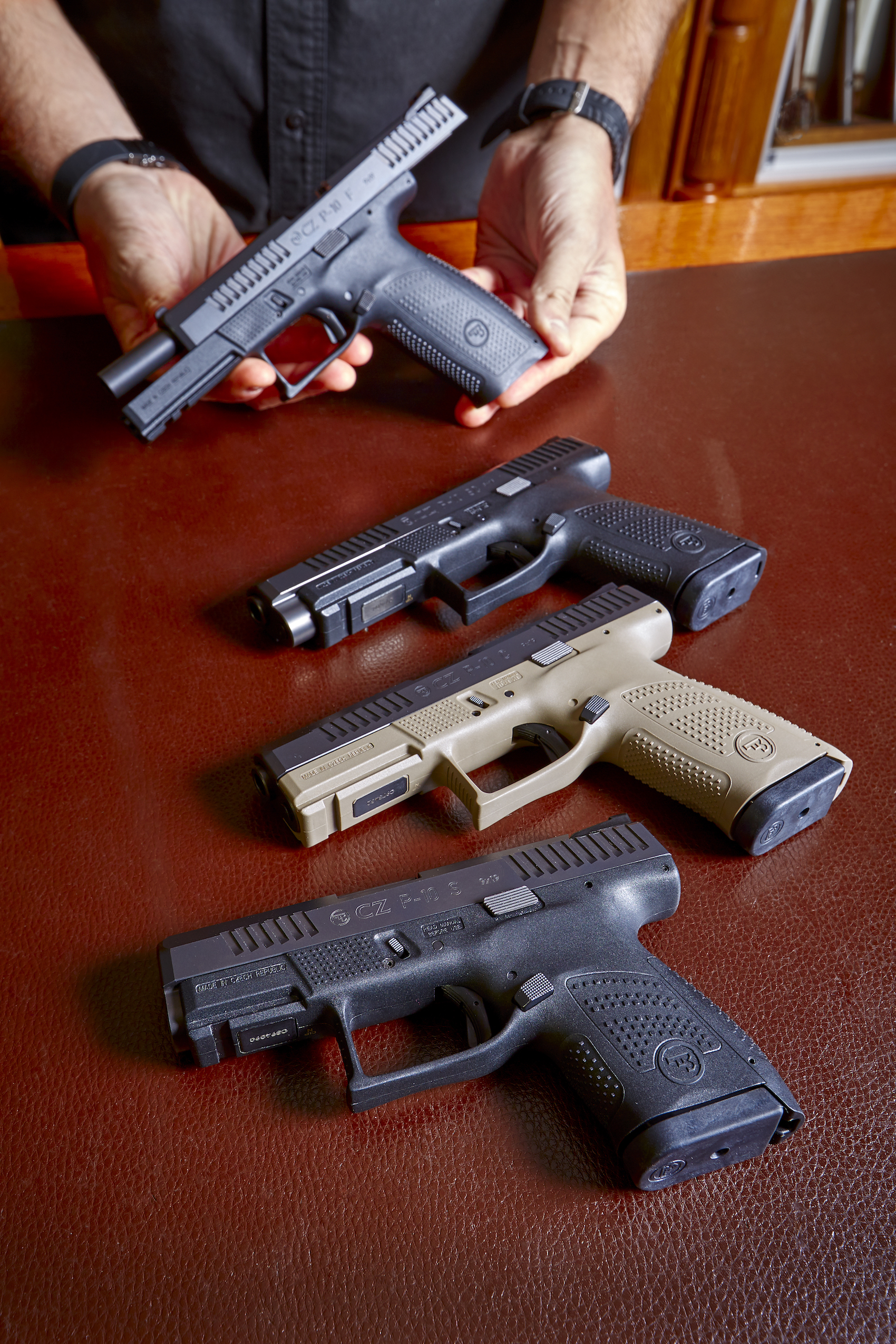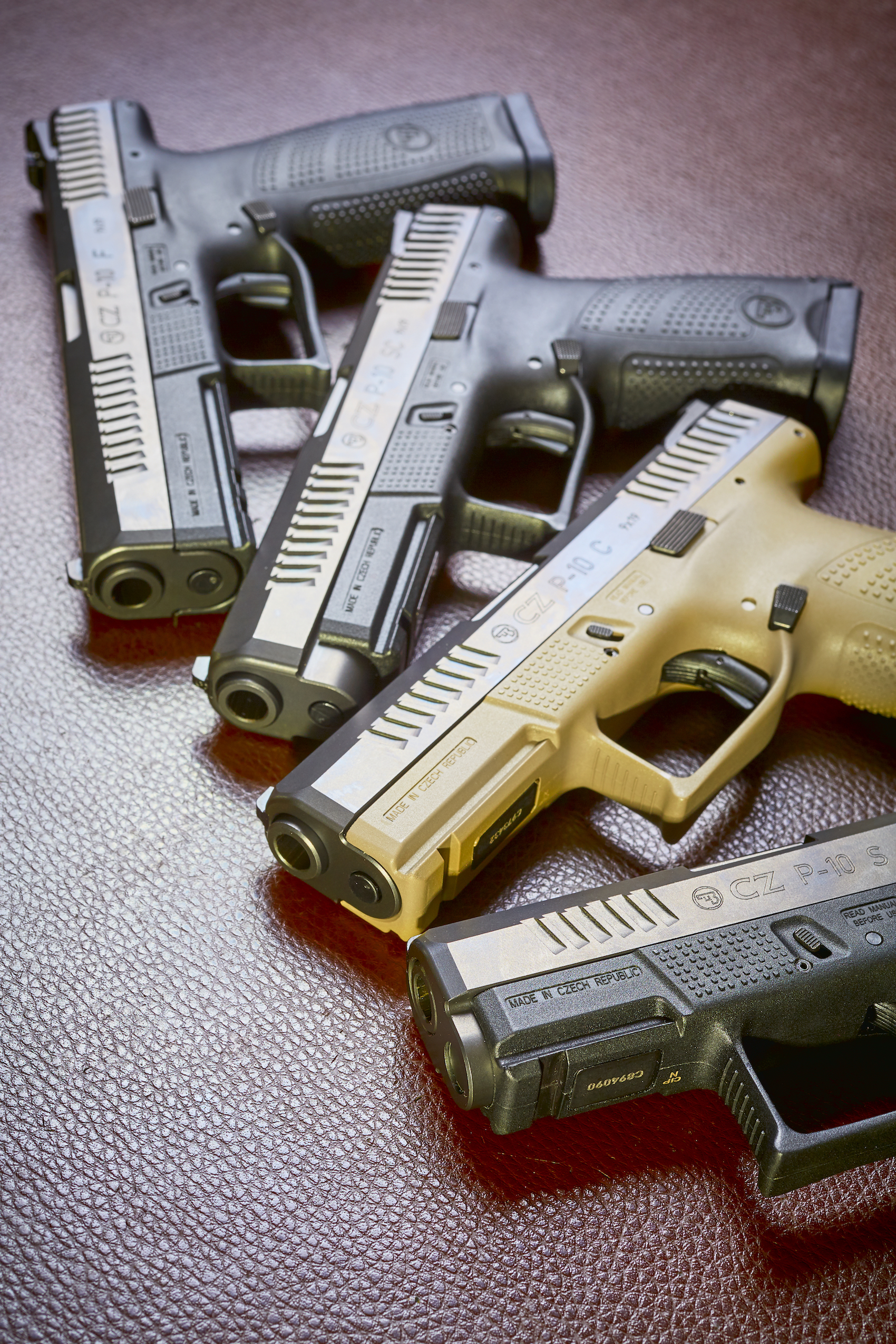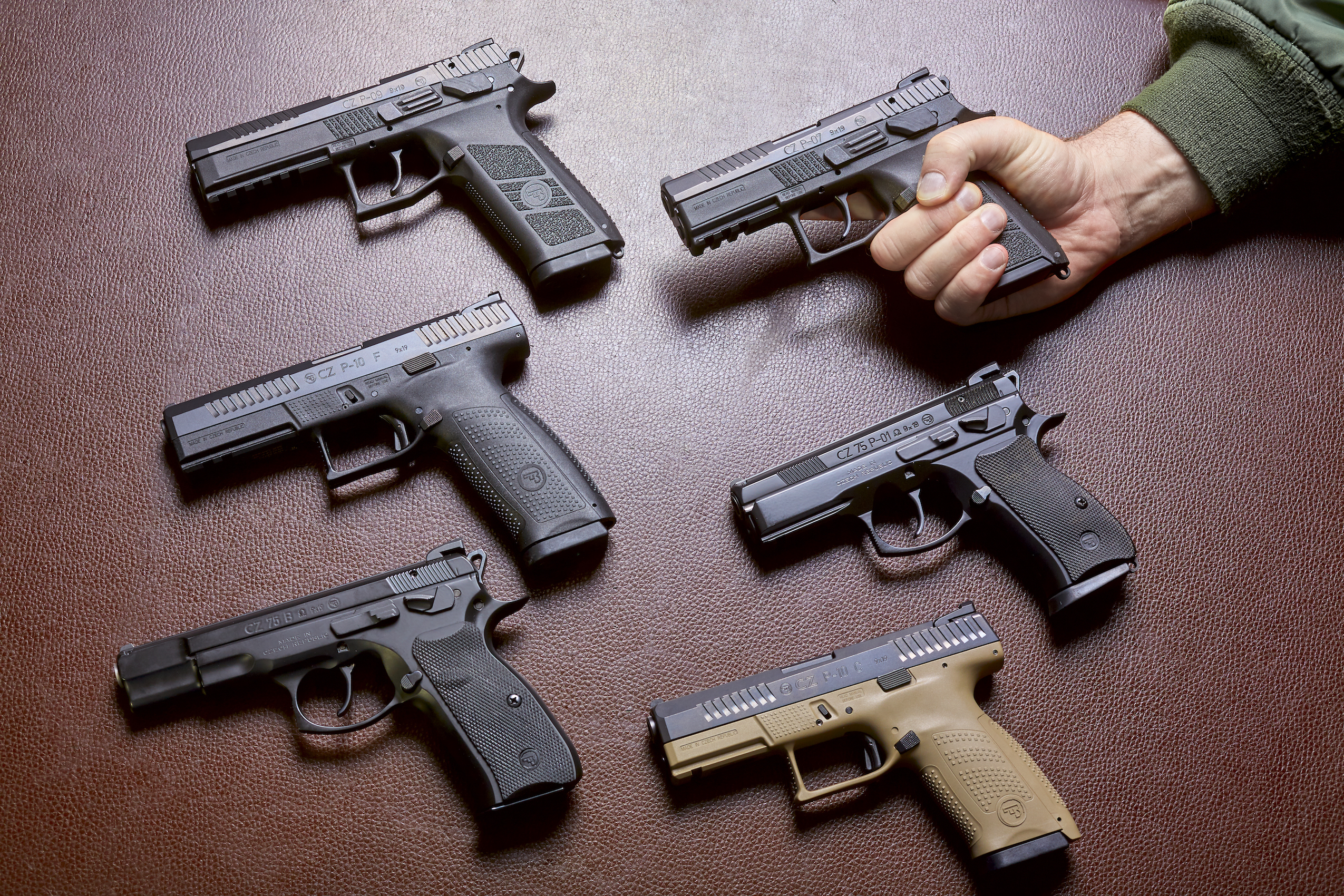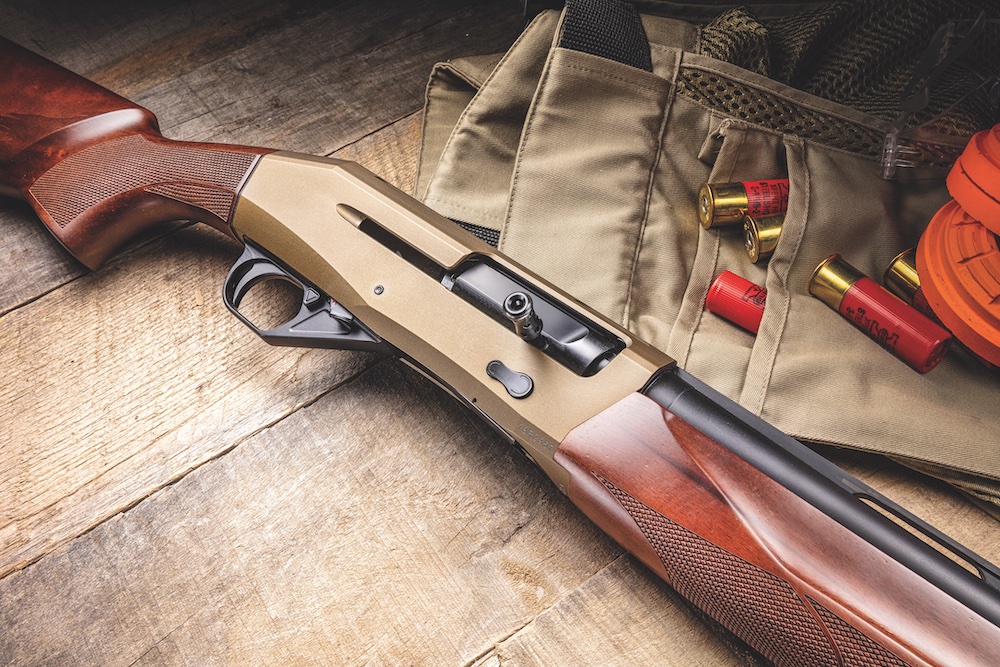The decision to own a firearm is the first important decision a new gun owner will make. The second is deciding what kind of gun. Whether it’s for pleasure, personal defense, work, or hunting, making the right choice for your first firearm purchase is one of the most critical factors to ensuring your satisfaction as a new gun owner.
- Why do I want a gun?
“To protect peace means to avoid war. But protecting peace also means bravely taking up arms against those who would wish to jeopardize the peace, harmony, humanity, dignity and freedom of each and every one of our citizens.”
– Edvard Benes, Second President of Czechoslovakia, 1884 – 1948
Our activities are driven by motivation. Choosing a gun is no exception. In general, there are six reasons a person decides to buy a gun:
- Practical target shooting
Target shooting is an exercise in precision for both for the shooter and the handgun. Firearms designed for target shooting must have the proper ergonomics, or fit and function to the shooter, which enable the shooter and handgun to work seamlessly together. Key parts of the handgun, like the trigger mechanism, barrel length, and proper, adjustable sights contribute significantly to shooting accuracy. As a shooter’s skill improves, their handguns must be equipped to grow with them. This means adjustable sights, triggers and grips. Additionally, many target competitions have strict requirements for the type of firearms that are allowed and shooters must ensure their choice of handguns is authorized for the competition.
- Practical defensive shooting
Read the competition rules in advance and consult the purchase of your gun with an experienced shooter.
- Protecting life, health and property
A gun used for personal defense must be reliable, safe, ergonomic and easy to carry. For frequent or daily carry, a big and heavy gun may not be the most practical choice. A better option would be a smaller and lighter compact model with a plastic or polymer frame. But in some cases, gun owners would prefer an even smaller and lighter handgun, such as the many sub-compact models that are available.
Another important choice in a handgun is what cartridge it’s chambered for to ensure it has sufficient stopping power and adequate magazine capacity. Absolutely reliability and long-term durability are additional considerations, which are best delivered by well-known firearm manufacturers with proven track records.
- Occupational requirement and security purposes
In this case, one needs a gun that is reliable, safe, has sufficient magazine capacity and is chambered for a cartridge with plenty of stopping power. If you’re involved in highly demanding security work, one of the most important things for the success of your team is to equip it with identical guns, cartridges and magazines, as well as the ability to mount various accessories.
- Recreational shooting
Some people simply buy handguns for pleasure. Shooting is a rewarding hobby, which is great for developing one’s concentration skills at any age. Recreational shooters don’t need big, powerful handguns that shoot expensive ammunition. Thanks to reasonably priced ammunition choices, the .22LR makes for a good recreational handgun cartridge.
- Collector’s piece
A collector’s piece could mean a limited edition, antique, inheritance from a famous person, or a model auctioned for charity. It could also be a gun that simply has an interesting serial number. In short, a gun with a story behind it!
Any gun, for the right reason, can be a collector’s piece. In these cases, prices can reach astronomical heights. If you pay a reasonable amount, it can also be a good investment. One thing to keep in mind, like with any firearm, is to be sure it’s kept in a secure location. Depending on supply and demand, gun values rise and fall, so be sure to invest wisely.
No single gun is ever ideal for everything, so shooters often acquire several guns over the years to meet their own needs and preferences. There is no universal gun to fit all activities. You have to find a specific gun for a specific purpose.
……………………………………………………………………………………………………………………
If you’re thinking about participating in shooting sports, choose the category and a corresponding gun that fits the proper requirements:
International Shooting Sport Federation: https://www.issf-sports.org/
European Shooting Confederation: http://www.esc-shooting.org/index.php
IPSC – divisions Standard, Open, Modified, Production, Production Optics, Revolver, Classic: https://www.ipsc.org/
International Defensive Pistol Association (IDPA): https://www.idpa.com/
- Facing the dilemma of new or used
There are advantages and disadvantages to buying new or used handguns.
While a used firearm may command a cheaper price, its condition depends on how well its previous owner took care of it. Potential second-hand gun buyers should inspect and test the potential purchase meticulously prior to purchase. We recommend getting a brand-new model. You receive a factory-backed warranty and authorized dealers are experienced, long-time partners of the manufacturer that will be happy to support you well after the sale with your new firearm’s parts and accessories, as well as providing you with practical gun knowledge.
- Pistol or revolver?
Revolvers are hardly ever used as a service gun nowadays, due to the low number of rounds in the cylinder. Despite the prevalence of speed loaders, reloading requires the learning of an additional skill and is much slower than changing a semi-automatic pistol’s magazine. In addition, revolvers are sometimes larger and heavier, which can be a disadvantage. The increased thickness is due to the cylinder, often making the gun unsuitable for concealed carry.
With that said, a revolver does have some strong points:
Exceptional reliability – practically no risk of failure
Easy to control – no need to pull the slide to load
Simple design and easy maintenance
The guns currently dominating the professional field of service and defense are modern semi-automatic pistols. Because of their design, they are highly reliable, safe and suitable for a wide range of use. Their high magazine capacity and fast reloading are additional, indisputable advantages.
- Ethics – Safety comes first
“All for one and one for all!” Alexander Dumas, The Three Musketeers
We must respect both the gun and the people around us. It means that we are responsible for our own conduct and safe handling of the gun. By owning a gun, each person represents the entire shooting community, as well as the brand of his or her model. Some might think that our constant focus on gun safety is excessive, but in fact, the opposite is true. Safety is really the foundation of each shooter’s ethical conduct, which helps to build a good name for the shooting community as a whole.
- Try Before You Buy
Visit a gun store and have the dealer show you the model you’re thinking about buying and ask for any recommendations. Having the gun in your hands can help you decide – but always remember to handle the firearm in a safe manner. When possible, we recommend for you to try the gun at a shooting range, preferably under the guidance of an experienced shooting instructor.
The continuous development of knowledge and skills is a lifelong commitment of every shooter. “Maintain a beginner’s mind” – this well-known phrase comes from Japan and serves as the cornerstone of martial arts studies. You should always pay the utmost attention when handling a gun and never let your actions become a dull routine.
- Size and weight
The ergonomics of the gun must correspond with your constitution and the shape of your hand. Sub-compacts are not very suitable for beginners. Some find them more difficult to handle and hold, as it might be hard to properly grip the gun. A gun must correctly fit your hand and should be tested at a shooting range. If a gun is wide and thick, it creates an outline on your clothing that’s easier to see when carrying as a sidearm or covertly.
You will definitely feel every gram of extra weight for weapons that are every day carry, which is why lighter polymer frames dominate the current service market.
- Cartridge – Value for money
For sport guns, the price of ammunition is crucial. You will go through a lot of rounds during training. You should also remember that shooting sports have rules for cartridges.
The mantra for defensive guns is stopping power, but the main requirement is an accurate hit in a vital zone. If you miss the perpetrator, you put the lives of yourself and others at risk. Therefore, intensive training is necessary and the price of ammunition should also be considered. For self-defense, it is better to carry a smaller gun with a less powerful cartridge than to have a larger gun with a more powerful cartridge locked away in a safe.
Below is a brief overview of a few cartridge options, but is not meant to be a comprehensive list:
- .45 ACP or .45 Auto – A classic, more powerful cartridge with high stopping power. Larger ammunition means fewer cartridges in the magazine and a higher price.
- .40 SW – A new, modern cartridge. The fairly new US 40 Smith & Wesson pistol cartridge saw its introduction by company representatives at the Shot Show Exhibition in the early 1990s. More power for more money.
- 9×19 or 9 mm Luger – With sufficient stopping power, it’s the most common cartridge for self-defense guns, with many variants of ammunition available for a reasonable price. It has an ideal price/performance ratio. Watch out for penetration in self-defense shooting, though.
- 9×21 – This cartridge was created in the 1980s, as Italy and other countries had forbidden civilians to own 9 mm Luger pistols. Armando Pisceta, from the company Armi Jäger, solved this problem by shortening the 9 mm Steyr cartridge and creating a completely new version. It was manufactured by IMI (Israel Military Industry) in Tel Aviv. This cartridge has also been loaded for higher power in IPSC competitions.
- 65 Browning – A classic cartridge used during WW2. It is less powerful and has low recoil, which translates into smoother operation during firing.
- .22 LR – It shoots accurately and has low recoil, which can be an advantage for some body types. An inexpensive purchase price keeps costs down and you’re offered a huge range of choices.
- Economic considerations
When you select a handgun, you also need to include the cost of ammunition. Shooters usually swap to a different cartridge if high costs lead to less training. One solution for saving money on ammunition is to reload, but the final cost of reloaded cartridges must include the price for bullets, powder, primers, cases, reloading equipment, cleaning the cartridge cases and other expenses. Time must also be considered, as reloading does take a while to carry out.
It’s important to keep in mind the overall, realistic price of buying a handgun. You don’t know how you will feel after some time has passed and what direction your shooting will take. You might even opt for a different type of gun. Therefore, it’s a good idea to start with a reasonably priced model.
Keep in mind that a second-hand gun with a suspiciously low price tag may be faulty and the repair costs at a gunsmith might exceed the purchase price. So, think wisely before making your purchase. Also remember that it’s often difficult to get spare parts for older models and knock-offs could have durability and reliability issues.
- Type of carry
Good questions to ask are when, where, and how often you will carry and what will you be wearing. If you regularly visit a shooting range with a gun nestled in its case, a large and heavy model is not a problem. But the same model carried under your t-shirt at the height of summer will attract unwanted attention.
If you work as a manager, and carry a gun as a precaution at the office and in meetings, you should opt for a different model than a security expert who carries a gun as a work tool under tactical clothing. A t-shirt should be worn when carrying your firearm, as aggressive sweat can cause corrosion.
Also consider whether you need a belt holster or if you will carry your gun in a bag or backpack. A holster must be sufficiently tight to prevent your firearm from falling out accidentally, while also allowing for an easy draw.
- Think ahead
- Reliability
Your gun must remain reliable, even after many years of demanding operation in tough conditions and in all types of weather. If the frame is made of metal, you need to apply gun oil regularly to treat the surfaces against corrosion. A stainless-steel model requires less maintenance, but is more expensive. A polymer frame does not require oil or other demanding maintenance measures, but the metal slide or bolt must still be treated.
- Gun accessories – Modification options
There is plenty of time to think about handgun accessories after you become proficient with your handgun. We recommend for you to first invest money in shooting range practice, ammunition and training. Some models are suitable for fine-tuning, others aren’t. Tuning is available for the trigger, sights, color of the finish, recoil springs, magazines, etc. It is good to have a gun for which you can purchase additional accessories, and that can be repaired or fine-tuned by a gunsmith in accordance with your requirements.
- Availability
Another plus is when a whole series is available. Some guns may be a rarity on certain markets, which could be a problem when looking for original parts or trying to file a claim.
We wish you luck in the choice of your future gun and that you’ll have a steady hand when shooting. Don’t forget that practice makes perfect, which includes dry shooting for learning how to handle the gun, as well as live firing at a shooting range. Every shooter should find a gun that suits them in all aspects. Shooting is a lifestyle and requires being responsible within the shooting community.









